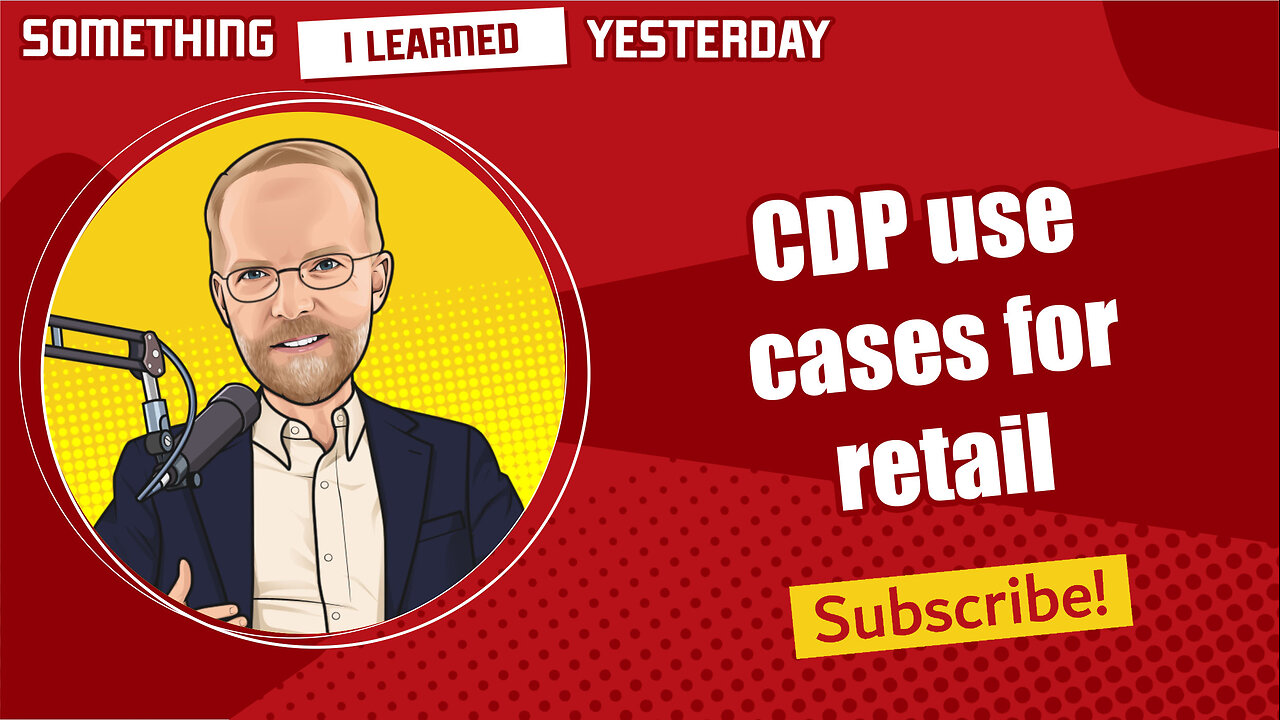Premium Only Content

170: CDP use cases for retail
Think of all the things you could do with better information about your customers.
I’ve done all my work with Customer Data Platforms in the publishing industry, but every industry needs to understand their customer data better, and there are great opportunities – especially in retail. When I go into a store, I’m always thinking about how that store could reach me more effectively if they had a good CDP strategy. So today I’m going to talk briefly about some CDP use cases for retail stores.
The basic purpose of a CDP is to gather customer information from multiple different sources to get a more complete view of the customer – in one place. These sources might include point of sale systems, and other in-store data, e-commerce data, customer service information, social media interactions, loyalty programs, information from supply chain and inventory systems, data from your email system, third-party data sources, and other things.
By integrating all these data points, the retailer can get a better sense of the customer and provide a better service.
Here are a few practical use cases for retailers.
Personalized product recommendations. This can be based on that customer’s purchase history, or on the purchase history of lookalike models. That is, people like that customer. These recommendations can be delivered by email, in app, in print, or as coupons on the customer receipt.
Speaking of print, my local grocery store sends me a flyer about what’s on sale. By combining that mail data with in-store purchase data, the grocery store could determine who actually responds to these mailings. They could send fewer mailings – or none – to the people who don’t respond to the mailings, and more to the people who do.
They could also do custom printing to send me a flyer for things I want to buy and my neighbor a flyer for things he wants to buy.
Once I’m in the store, the retailer could display a QR code with a link to the latest bargains. There are many ways to personalize that experience. The simplest would be by location. But if you can link the recommendation with customer data – for example, with a rewards number, or a login – then you can customize those deals. There’s no point in sending me a discount on dog food because I don’t have a dog.
Many of the retailers you visit – especially the big chains – already have this kind of information. When you buy a Hewlett Packard printer at Staples, they send you ads for Hewlett Packard ink cartridges.
But smaller retailers don’t always have the IT infrastructure to make this sort of thing work.
That raises an important question. How big do you have to be to benefit from a Customer Data Platform?
I can’t give a generic answer because it depends on your market, your profit margins, and other things.
But if you’re curious, give me a call. That doesn’t cost you anything.
-
 23:50
23:50
marcushouse
16 hours ago $4.36 earnedStarship Is About to Do Something It’s Never Done Before - A Huge First!
40.5K17 -
 LIVE
LIVE
FrizzleMcDizzle
1 hour agoElden Ring Seamless COOP
93 watching -
 41:56
41:56
CatfishedOnline
2 days agoKinky Man Sends 401k to Romance Scammer from Ghana!
25.1K9 -
 1:53:55
1:53:55
Nick Shirley
19 hours ago $6.45 earnedIRL Confronting Anti-Trump & Anti-Elon Protesters
28.6K122 -
 16:18
16:18
Tactical Advisor
1 day agoRetiring My Patrol Rifle | Old vs New
27.4K2 -
 22:29
22:29
JasminLaine
20 hours agoAwkward Silence After Poilievre FACT CHECKS Reporter—Carney’s Face SAYS IT ALL
29.9K38 -
 9:48
9:48
VSOGunChannel
20 hours ago $1.85 earned25% of ATF Getting Fired? SUPER ATF on Hold?
28.8K29 -
 11:09
11:09
ariellescarcella
1 day ago"All 4 Of My Kids Are Trans" : NOOOOOO
27.7K33 -
 12:35
12:35
GoldenWebb
1 day ago $0.31 earnedMP5/K Super Safety
16.8K6 -
 2:45:42
2:45:42
Badlands Media
1 day agoDevolution Power Hour Ep. 343: System Shock
174K166